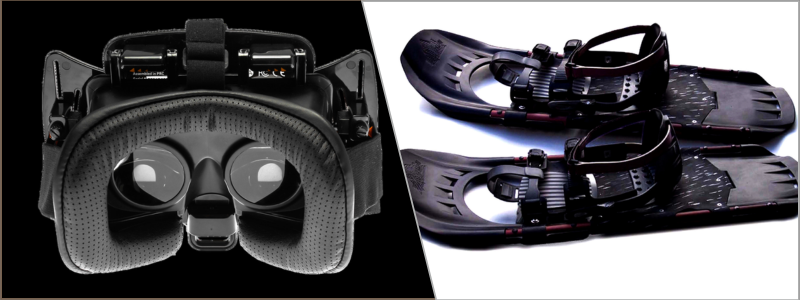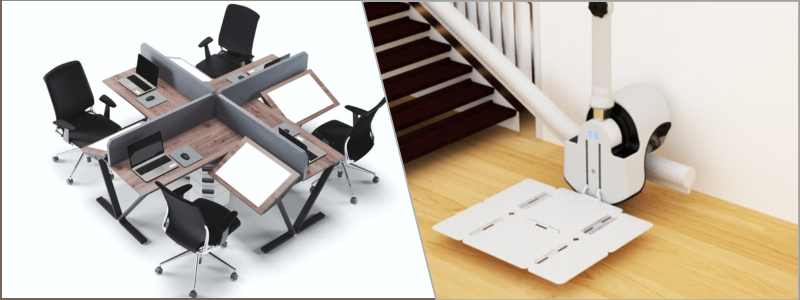Due to the growing design market, the success of any company and product often relies on its design and the user experience of the consumers. A critical approach in product design emerged known as user-centered design (UCD). This approach for product design companies and prototyping emphasizes the needs, wants, and limitations of the consumers, or what we call here the users, at every stage of the design process.
Cad Crowd is the leading agency that can help you connect with experts providing product design and prototyping services for your company. Consisting of over 94,000 freelancers, we pride ourselves on our ability to give reasonable service rates while still exceeding your highest standards. Whether you’re looking for innovative solutions, new concept design, strategic insights, or top-tier execution, CAD Crowd has the expertise and the talent to bring your vision to life.
This article will enlighten you on the significance of user experience in product design and the necessary steps needed to embed user-centered design (UCD) principles into your product.
🚀 Table of contents
What is user-centered design (UCD)?
User-centered design (UCD) is a design process that focuses on the needs, wants, feedback, and behaviors of users throughout the product development process. Unlike traditional design processes that prioritize the technical aspects, user-centered design professionals aim to highlight the involvement of the user to produce a successful product that satisfies its standards in terms of functionality and accessibility.

RELATED: 6 industries revolutionized by 3D rendering freelancers & design services companies
Why is user-centered design important in product development?
User-centered design indeed solves the problem of each user at every product development service stage, which then improves the integrity of the business. Here are some of the reasons why you should include user-centered design for your product design.
Enhances usability
A product that is designed to cater to the needs of the users can be classified as a well-designed product due to the minimal effort required to operate it. This then leads to higher user satisfaction and lower functional errors. As stated earlier, UCD prioritizes satisfying the user’s needs and wants, which reflects its usability. When products are intuitive and easy to use, end-users won’t experience confusion or frustration. As a result, they’ll turn to the help desk less because it will be simpler to use the product or service.
Increases user engagement
Since UCD focuses on the users’ wants, consumer product services make your products more likely to engage users effectively. If a positive experience were developed in the consumers, brand loyalty would then follow, which encourages users to explore additional features or new products within the same brand. Increased engagement also translates to the feeling of being valued by the users because a brand or company is taking their opinions seriously and wants to make their user experience better.
Fosters innovation
User feedback often leads to unexpected insights that can drive innovation. By understanding users’ pain points and desires, designers can create solutions that may not have been initially considered, resulting in unique and groundbreaking products. User research and feedback provide valuable data to inform design choices. Evidently, it ensures products are grounded in user reality, not assumptions.
Improves market fit
By incorporating user-centered design principles, companies can create products that align with customer expectations and satisfaction, which leads to a better fit in the market and a possibility to start a trend among products.
Improving your credibility
When you adopt a user-centered design, you gain credibility among your end consumers. You demonstrate that you care and understand their requirements. This allows them to feel that they’re working with a company that prioritizes them and will properly understand their user experience needs, resulting in a superior product or service in the end. By prioritizing user needs and incorporating their feedback throughout the development process, UCD enables developers to produce products that are not only successful but also highly desired by their target audience.
Reducing your resource burden
The design process is resource-intensive. 3D design experts devote their time and effort to making the best possible product for the client. Yet, it’s not unheard of for a designer to work around the clock on a project only to be told that he or she has missed the mark. User-centered design helps you avoid that problem.
It might seem as though user-centered design would require more resources, but that isn’t the case. Because designers request feedback repeatedly, they’ll get a better sense of what the client actually wants sooner. They won’t waste their time creating a finished product that’s ultimately rejected. As Vause pointed out, investing time and effort into highly-rendered designs can lead to squandered resources.
RELATED: Design services rates for developing a prototype of your firm’s product new concept design

Reducing project risks
In every process, there are always partnered risks. However, the user-centered design reduces the risks and errors because the features directly match the user’s satisfaction. Unlike with the traditional design process, where the users are not prioritized, they don’t have an opportunity to provide feedback that will satisfy them eventually, which could lead to dissatisfaction with the designer’s work.
Increasing conversion rates and sales
Another advantage of user-centered design is higher conversion rates and sales. This applies to both design organizations and end users.
Assume you redesign your company’s flagship application after considering end-user feedback. It’s now easier to use, so you’re more likely to see people progressing through their sales journey. In fact, you’ll probably experience an increase in sales because you’re making it easy for them to buy from you. One of the most convincing arguments for embracing user-centered design is that these initiatives have a greater ROI. This is true for both designers and end users, and prototype design services would usually put an ample focus on user-centric design.
Increasing efficiency
This is a benefit that is available to end consumers. If your company has applied user-centered design inside, you will realize efficiency improvements as well. End-users benefit from user-centered design since it makes jobs easier and faster to accomplish. They don’t waste time or energy figuring out how to do anything; it’s intuitive.
How can businesses implement user-centered design in their product development process?
Integrating user-centered design into your product development process can dramatically enhance product success. Listed below is the process to effectively implement user-centered design in your product development:
- Create a user-centric culture – Encourage cross-functional collaboration among product development experts, developers, and marketing teams, as well as a company-wide understanding of UCD principles and their value.
- Conduct user research – Surveys, interviews, and user observation can all help you better understand your target audience. Determine user needs, pain points, and expectations. Additionally, create user personas or fictional persons to help drive design decisions.
- Embrace iterative design – In pre-design planning, you can create a low-fidelity prototype and conduct usability testing to obtain user feedback. Furthermore, modifying and customizing the design based on their feedback is possible. This ensures that the product evolves in response to consumer needs.
- Establish feedback mechanisms – Integrate user feedback channels throughout the development process. Encourage user testing, surveys, and post-launch feedback to gather continuous insights.
- Measure and analyze – Monitor critical user experience data such as job completion and error rate. Carefully examine user input to discover areas for improvement and prioritize adjustments.
- Invest in training – Provide your team with the skills and resources needed to perform user research, analyze data, and effectively execute UCD concepts.
RELATED: How much does NPD cost? Rates & pricing for services at top design companies
Conclusion
User-centered design has transformed into an essential design process in modern product development. By allowing users to have a unique experience in the design and prototype design engineering service process, companies and brands create solutions that genuinely address market needs rather than guessing. The business implications are substantial, including heightened customer satisfaction, reduced development costs, and stronger competitive positioning.
As consumer options continue to multiply, a company’s legacy directly depends on how effectively its services align with the changing market demands. Even well-resourced businesses can fall victim to institutional biases that cover genuine customer requirements. By systematically incorporating user-centered design and iteratively refining designs, companies can overcome these challenges and develop products that resonate with their target audience.
How Cad Crowd can help?
Product design is a rewarding process that calls for technical expertise and strategic vision. With Cad Crowd’s comprehensive product design solutions, companies can take every step confidently with the use of user-centered design. Be it a cutting-edge consumer device or an industrial part, Cad Crowd is a trusted partner in bringing your vision to life.
Feel free to contact us today to order a quote for our product design services and beyond! Request a free quote today.

